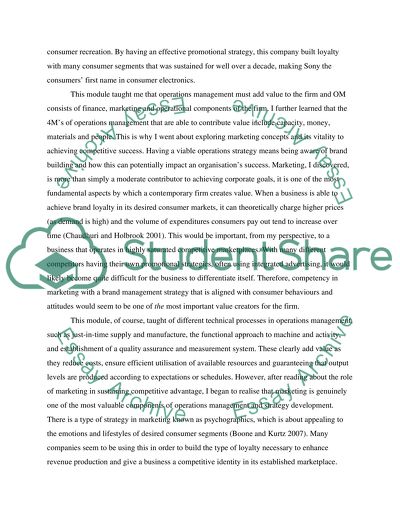Cite this document
(Reflection on Marketing Module Essay Example | Topics and Well Written Essays - 2250 words, n.d.)
Reflection on Marketing Module Essay Example | Topics and Well Written Essays - 2250 words. Retrieved from https://studentshare.org/marketing/1639509-a-reflective-portfolio-where-you-identify-your-learning-requirements-and-discuss-how-you-addressed-those-needs
Reflection on Marketing Module Essay Example | Topics and Well Written Essays - 2250 words. Retrieved from https://studentshare.org/marketing/1639509-a-reflective-portfolio-where-you-identify-your-learning-requirements-and-discuss-how-you-addressed-those-needs
(Reflection on Marketing Module Essay Example | Topics and Well Written Essays - 2250 Words)
Reflection on Marketing Module Essay Example | Topics and Well Written Essays - 2250 Words. https://studentshare.org/marketing/1639509-a-reflective-portfolio-where-you-identify-your-learning-requirements-and-discuss-how-you-addressed-those-needs.
Reflection on Marketing Module Essay Example | Topics and Well Written Essays - 2250 Words. https://studentshare.org/marketing/1639509-a-reflective-portfolio-where-you-identify-your-learning-requirements-and-discuss-how-you-addressed-those-needs.
“Reflection on Marketing Module Essay Example | Topics and Well Written Essays - 2250 Words”, n.d. https://studentshare.org/marketing/1639509-a-reflective-portfolio-where-you-identify-your-learning-requirements-and-discuss-how-you-addressed-those-needs.


